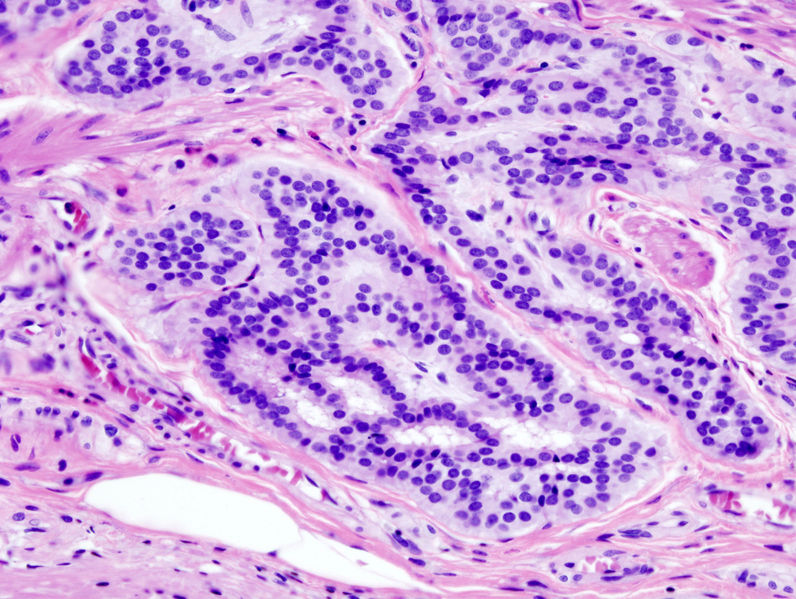Colorectal cancer pathophysiology
Editor(s)-in-Chief: C. Michael Gibson, M.S.,M.D. [1] Phone:617-632-7753; Elliot B. Tapper, M.D., Beth Israel Deaconess Medical Center
|
Colorectal cancer Microchapters |
|
Diagnosis |
|---|
|
Treatment |
|
Case Studies |
|
Colorectal cancer pathophysiology On the Web |
|
American Roentgen Ray Society Images of Colorectal cancer pathophysiology |
|
Risk calculators and risk factors for Colorectal cancer pathophysiology |
Overview
Pathophysiology
As of 1993, there was a discovery made in the mechanism of the development of colon cancers. It was found that HNPCC is caused by germline mutations of mismatch repair genes[1]. A germline mutation is defined as a gene change in a body's reproductive cell that becomes incorporated into the DNA of every cell in the body of the offspring.
At a microbiological level, the development of the colon cancers (as well as other cancers) can be linked to defects within the cell cycle[1]. In a normal cell cycle, kinetochores, which are located at the centromere of the chromosomes, will attach to the mitotic spindle fibers. The sister chromatids will be pulled to either side of the cell, creating the necessities for two separate cells. If the kinetochore is not properly attached to the spindle, a signal is generated that stops the mitotic division until the attachment is fixed. This signal causing system is referred to as the spindle-assembly checkpoint. If there are mutations in this checkpoint, then mitosis can continue without repairing detached kinetochores. This will ultimately lead to mis-segregation of chromosomes as well as aneuploidy, which is an abnormal amount of chromosomes in a cell[1]. A predisposition to colon cancer may come from this mechanism.
Pathology
The pathology of the tumor is usually reported from the analysis of tissue taken from a biopsy or surgery. A pathology report will usually contain a description of cell type and grade. The most common colon cancer cell type is adenocarcinoma which accounts for 95% of cases. Other, rarer types include lymphoma and squamous cell carcinoma.
Cancers on the right side (ascending colon and cecum) tend to be exophytic, that is, the tumour grows outwards from one location in the bowel wall. This very rarely causes obstruction of feces, and presents with symptoms such as anemia. Left-sided tumours tend to be circumferential, and can obstruct the bowel much like a napkin ring.
Histopathology
Adenocarcinoma is a malignant epithelial tumor, originating from glandular epithelium of the colorectal mucosa. It invades the wall, infiltrating the muscularis mucosae, the submucosa and thence the muscularis propria. Tumor cells describe irregular tubular structures, harboring pluristratification, multiple lumens, reduced stroma ("back to back" aspect). Sometimes, tumor cells are discohesive and secrete mucus, which invades the interstitium producing large pools of mucus/colloid (optically "empty" spaces) - mucinous (colloid) adenocarcinoma, poorly differentiated. If the mucus remains inside the tumor cell, it pushes the nucleus at the periphery - "signet-ring cell." Depending on glandular architecture, cellular pleomorphism, and mucosecretion of the predominant pattern, adenocarcinoma may present three degrees of differentiation: well, moderately, and poorly differentiated. [2]

Pathogenesis
Colorectal cancer is a disease originating from the epithelial cells lining the gastrointestinal tract. Hereditary or somatic mutations in specific DNA sequences, among which are included DNA replication or DNA repair genes[3], and also the APC, K-Ras, NOD2 and p53 genes, lead to unrestricted cell division. The exact reason why (and whether) a diet high in fiber might prevent colorectal cancer remains uncertain. Chronic inflammation, as in inflammatory bowel disease, may predispose patients to malignancy.
References
- ↑ 1.0 1.1 1.2 Scully R (2010). "The spindle-assembly checkpoint, aneuploidy, and gastrointestinal cancer". The New England Journal of Medicine. 363 (27): 2665–6. doi:10.1056/NEJMe1008017. PMID 21190461. Retrieved 2011-12-12. Unknown parameter
|month=ignored (help) - ↑ Pathology atlas (in Romanian)
- ↑ Ionov Y, Peinado MA, Malkhosyan S, Shibata D, Perucho M (1993). "Ubiquitous somatic mutations in simple repeated sequences reveal a new mechanism for colonic carcinogenesis". Nature. 363 (6429): 558–61. PMID 8505985.